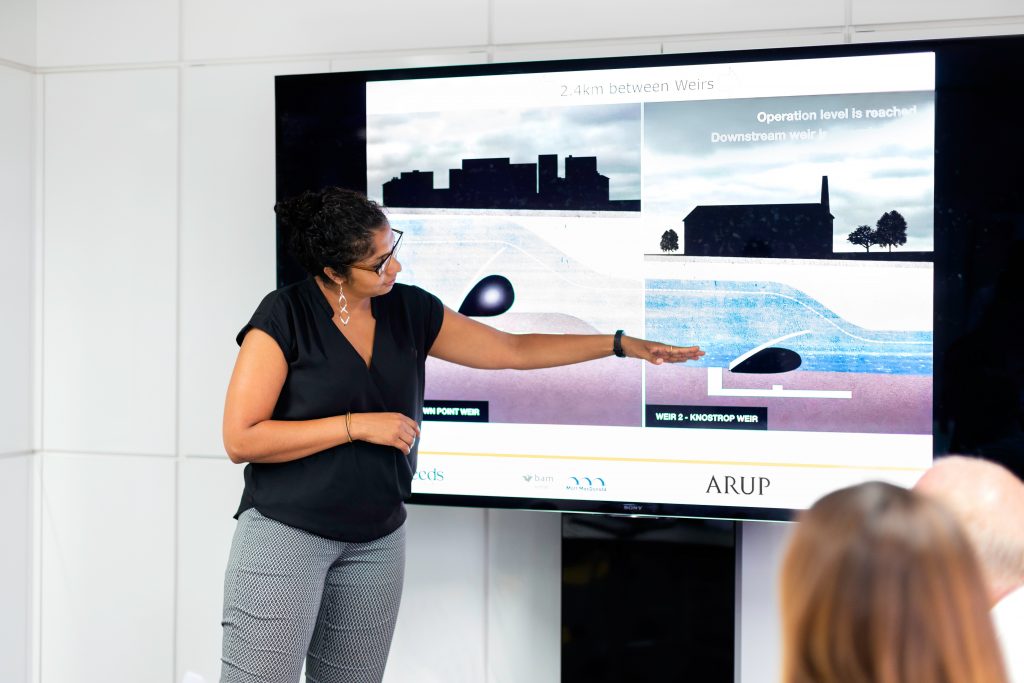
Image by Jordan Nicholson from Disability:IN
The Accessibility for Manitobans Act for post-secondary educators
Written by JJ Cloutier
Edited by Debra Sinkarsin
Content reviewed May 2024
- Overview
- The Accessibility for Manitobans Act
- Accessible Information and Communication Standard
- Duty to notify
- Education materials
- How post-secondary educators can meet guidelines
- How post-secondary institutions can support post-secondary educators
- References
- Further learnings
- MB Hub accessible teaching material resources
- Other resources
- Online courses about WCAG and accessibility
- Help for your online or blended course
- You may also be interested in
Overview
- Explain the information and communication standards of The Accessibility for Manitobans Act.
- Provide information on the specific dates when the “Accessible Information and Communication Standard” takes effect.
- Guide post-secondary educators to comply with the “Accessibility for Manitobans Act” and “Accessible Information and Communication Standard.”
- Analyze the role of post-secondary institutions in assisting educators in supporting compliance with The Accessibility for Manitobans Act and Accessible Information and Communication Standards.
The Accessibility for Manitobans Act
The “Accessibility for Manitobans Act” (AMA) provides a process to remove barriers for people with disabilities. It affects all Manitobans and includes those who can identify, remove, and prevent barriers to accessibility such as educators and educational institutions.
Accessibility standards are the foundation for making real, measurable, and effective changes to accessibility. Each standard outlines specific requirements and deadlines for organizations responsible for compliance with “The Accessibility for Manitobans Act.”
The AMA became law in December 2013 and consists of five standards.
- Accessible Customer Service Standard
- Accessible Employment Standard
- Accessible Information and Communication Standard
- Accessible Transportation Standard
- Accessible Design of Outdoor Public Spaces Standard
Post-secondary institutions fall under the public sector. As educators employed at post-secondary institutions, they must follow the public sector requirements and deadlines.
The standard in which educators can have the greatest impact and the greatest responsibility is the “Accessibility for Information and Communication Standard.”
Accessible Information and Communication Standard
The “Accessible Information and Communication Standard” calls on organizations and all Manitobans to think about how people interact with or access the information they provide (including digitally), evolving measures, policies and practices as well as providing barrier-free information and communication. Communications and information include educational materials.
Two ways to remove barriers are:
- To create accessible materials (e.g., material meeting WCAG 2.1 level AA guidelines)
- To provide a communication support or a different format option that meets the person’s needs when requested.
Examples of accessible formats (not limited to):
- Large print
- Recorded audio
- Electronic formats
- Braille
Examples of Communication supports (not limited to):
- Captioning
- Plain language
- Sign language
- Alternative and augmentative communication supports.
Public sector organizations, including libraries and post-secondary institutions, must comply with the Accessibility for Information and Communication Standard by May 1, 2024.
Duty to notify
A duty to notify is an active offer statement in which every post-secondary institution and its employees must use to notify users of the availability of accessible formats and communication support.
This proactive offer ensures that people who need different options are aware of how to ask for them, helping make all your information and services available and accessible.
Post-secondary institutions must include an active offer on all print and digital information. They are to position the offer in an obvious place, such as: the start of a document, online course material, in the footer of an email or website, or bottom of a poster.
Your employing institution may provide you with a sample statement to use for different situations. In the meantime, some examples of duty to notify statement are:
General statement:
- Available in alternate formats upon request. Please contact [instructors name] at [email address].
Email statement:
- This message is available in alternate formats upon request. Please contact [instructors name] at [email address].
Course materials:
- Course materials will be provided in a communications support or accessible format upon request. Please contact me, [instructors name] at [email address].
Institutional statement:
- In fulfilling our mission, the [post-secondary institution name] strives to provide its services in a way that respects the dignity and independence of people with disabilities. As such, [post-secondary institution name] will provide an alternative communications format or different accessible format upon request. Please contact [individual responsible for requests’ name] at [email address].
Education materials
Educational materials cover a range from promotional or program information typically seen on post-secondary websites to the student’s course materials. Some materials will be the post-secondary institution’s responsibility while others are the post-secondary educator’s responsibility.
Educational material includes:
- Course material in Learning Management Systems (LMS)
- Course outline, overview, or syllabus
- Textbooks
- Supplementary learning resources, including:
- Reference books
- Workbooks
- Educational kits
- Student records
- Information about the learning opportunity such as:
- Classes
- Lessons
- Workshops
- Programs
- The details of the learning opportunity including:
- Descriptions
- Availability
- Scheduling
- Requirements
How post-secondary educators can meet guidelines
Post-secondary educators play a key role in meeting the guidelines as they are curators and creators of much of the educational materials. Here a listing of what post-secondary educators need to do to meet the AMA Accessible Information and Communication Standard guidelines:
- Inform their students or anyone else they communicate with a duty to notify statement that information and educational materials are available through a communication support or as an accessible format upon request.
- Create all new educational materials and communications following the WCAG (Web Content Accessibility Guidelines) 2.1 level AA guidelines or better. Check out WCAG2 at a glance which provides a paraphrased summary of the guidelines.
- Select educational materials for their course which have accessible formats and where no accessible format is available, find a comparable resource for use when requested.
- Comply with request that comes in as a communication support or accessible format request.
- Consulting with the student requesting accessible information or educational materials to identify the support or format that would remove the barrier.
- Provide the material in a timely manner.
- Do not impose a cost or fee that would not be imposed on a person who did not make a request.
- Provide a comparable resource when educational material cannot be provided through a communication support or accessible format.
How post-secondary institutions can support post-secondary educators
Post-secondary institutions play a key role in meeting the guidelines as they provide the digital structure (LMS and website platforms) used for communication with students, prospective students, applicants, prospective applicants, parents, and guardians of those groups. They hold employers responsible to their employees including post-secondary educators (regardless of term or full-time status). Here a listing of what post-secondary institutions need to do to post-secondary educators meet the AMA Accessible Information and Communication Standard guidelines:
Post-secondary institutions must:
- Publicly inform the general public and their employees with duty to notify statement that they will provide information through a communication support or accessible format upon request.
- After May 1st, 2024, if a post-secondary institution acquires new or upgrading web applications such as Learning Management Systems (LMS) or website content Management Systems (CMS) they must ensure the web applications supports WCAG 2.1 level AA guidelines.
- After May 1st, 2024, when publishing or updating website content, it must meet WCAG 2.1 level AA guidelines.
- Create a feedback process for accessible information and communication supports including documenting resulting actions.
- Provide training to a person who is an educator, and the training content must include but not be limited to the following:
- How to identify, prevent and remove barriers to accessible communication.
- How to provide information through a communication support or accessible format including how to document the resulting actions.
- Create documentation which includes:
- Writing down all policies, measures and practices related to accessible information and communication, including the content and timeframe for training.
- Making these documents publicly available.
- Post-secondary libraries are responsible for ensuring that users (including educators) are informed about the types of support or formats available for each resource in their library holdings by a duty to notify statement.
References
Manitoba Accessibility Office. (n.d.). Accessibility for Public Sector.
Accessibilitymb.ca. https://accessibilitymb.ca/public-sector/accessibility-for-public-sector.html
Manitoba Accessibility Office. (2023). Checklist for Educational Institutions (public sector): The Accessibility Standard for Information and Communication. https://accessibilitymb.ca/resources/ic_standard_checklist_educational_institutions.pdf
Further learnings
MB Hub accessible teaching material resources
- Primer on accessible courses
- Alt-text for teaching materials
- Audio in online teaching materials
- Colour for online teaching materials
- Colour design system for an accessible colour palette
- Images in teaching materials
- Video in online teaching materials
Other resources
- Understanding Barriers to Accessibility: An Educator’s Perspective by Ontario’s’ University Accessible Campus. Note: legal requirements differ from Manitoba
- Educators: Digital Accessibility by eCampusontario.ca. Note: legal requirements differ from Manitoba
- Educator’s Accessibility Toolkit – Accessible Campus by Ontario’s’ University Accessible Campus. Note: legal requirements differ from Manitoba
- Make your content accessible to everyone by Microsoft Support.
Online courses about WCAG and accessibility
- W3Cx: Introduction to Web Accessibility on edX platform created by W3C. For more information read WC3 description at Digital Accessibility Foundations – Free Online Course
- Accessibility of eLearning by The Open University
- Addressing Accessibility and Usability (Standard 8) by Quality Matters. This workshop provides detailed information about accessibility, usability, readability and how to design courses with all these topics in mind. Information is provided on Universal Design for Learning, challenges learners may encounter, creating accessible content, and designing courses that can be navigated.
- Fee with QM Membership (Single Registration): $165.00 USD as all instructors at The Manitoba Flexible Learning Hub partner institutions have access to the resources and benefits of the QM consortium membership.
- Fee without QM membership (Single Registration): $220.00 USD
Help for your online or blended course

If you are looking for help with creating accessible course materials? We have staff you can consult with for your online, blended or distributed courses.
Book a one-on-one “Instructional Design Consultation” with our Instructional designer to build more accessible content today!
You may also be interested in



